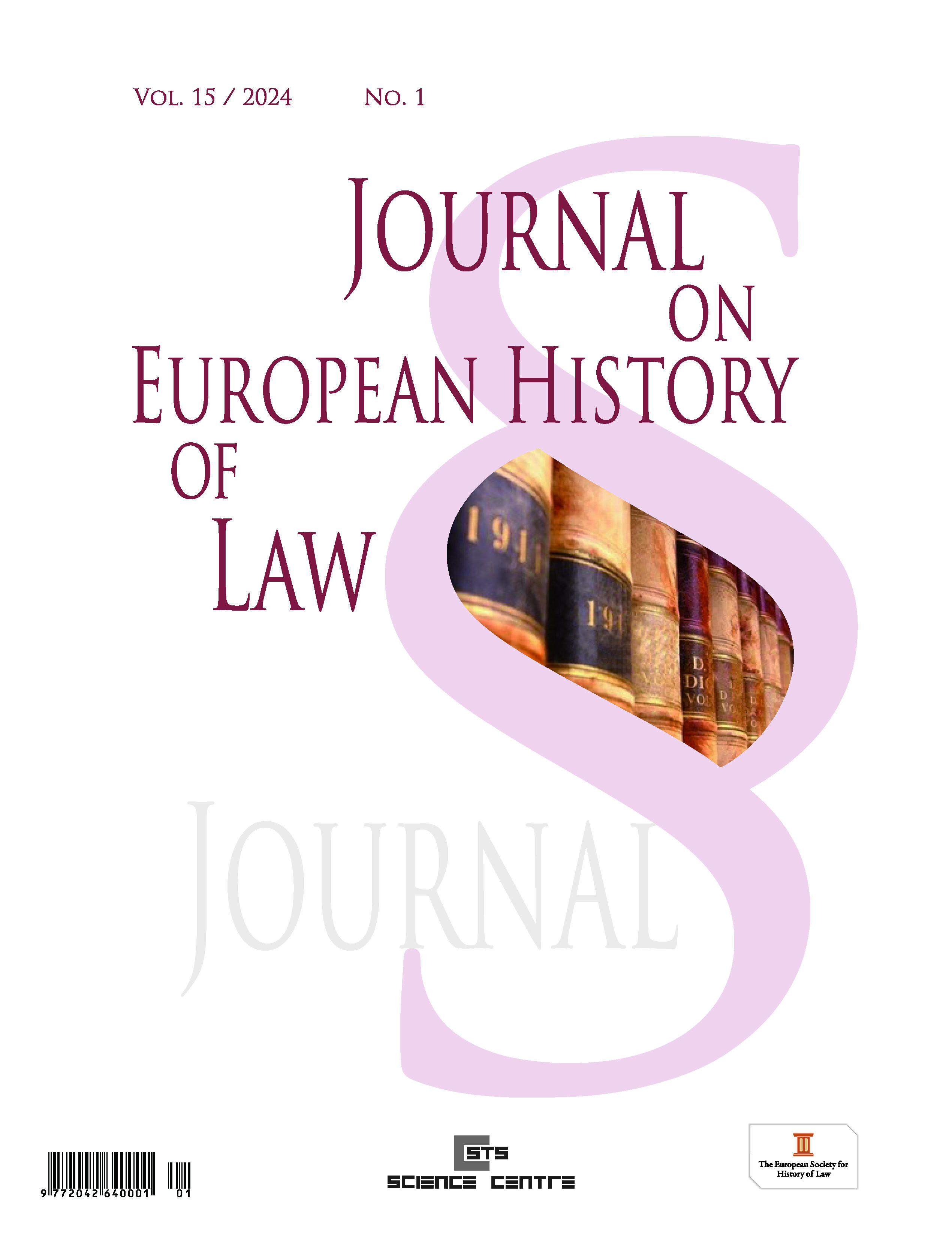Die letzte Periode der römischen Verfassungsgeschichte: Das spätrömische Reich und der Dominat oder Periode der Absoluten Monarchie
The Final Period of the Roman Constitutional History: the Later Roman Empire and the Dominate or Period of the Absolute Monarchy
Author(s): Carlos SardinhaSubject(s): History, Law, Constitution, Jurisprudence, History of Law, Constitutional Law, Political history, Ancient World
Published by: Evropská společnost pro právní dějiny, z.s.
Keywords: Dominate; Tetrarchy; Christianity; despotism; division; Barbarian invasions; foedera; patronage;
Summary/Abstract: One of the aspects that caracterizes the period of the so-called Dominate (Dominatus) or Absolute Monarchy is the fact that the imperial power makes use of religion to legitimize itself. From another perspective, changes in the organization of the Imperial Chancery took place that reflect the reality of an absolute monarchy of divine right supported by a complex bureaucracy and a strong army, with important impact on the tax system. An exponential price increase characterizes the crisis of the 3rd century AD from Aurelian onwards and justifies Diocletian’s despotism on economic issues. Characteristic of this epoch is an Imperial Government formed by several Emperors at the same time. A system of Imperial Tetrarchy was thus established. The radical change in the imperial policy concerning Christianity took place under Emperor Constantine. After the Milan Agreement (313 AD), Constantine assumed himself more and more as the protector of the Church, collaborating with the Bishops in their fight against heresy and legislating favourably towards Christianity. The definitive division of the Empire into two took place after the death of Emperor Theodosius I, Augustus in the East between 379 and 394 AD, only Emperor in 394/395 AD, with two Emperors, one in the Eastern Roman Empire, the other in the Western Roman Empire. The so-called Barbarian Invasions, that is, the assault of several Germanic tribes and tribal groups on Roman territory in the 5th century has caused the fall of the Western Roman Empire. Yet the Eastern Half of the Empire continued to exist. In the 5th century the Western Roman State underwent a gradual disintegration. The conclusion of foedera, that is, treaties with Non-Roman Barbarian Groups which contained a right to settle on the territory of the Roman Empire, were instruments of power, to which the weakened Roman Emperors resorted in order to be able to continue to assert their claim to sovereignty over the territory of the Roman Empire. For other reasons, too, the authority of the Roman emperors came under scrutiny. The spread of the so-called patronage in both the Eastern and Western Roman Empires means, for example, that prominent personalities such as imperial officials and large landowners maintain private armies (e.g.: buccellarii) that act in their own interest and are not in the service of the common good. Especially after the reign of Majorian (457-461 AD), the disintegration of the Western Roman State could no longer be stopped.
Journal: Journal on European History of Law
- Issue Year: 15/2024
- Issue No: 1
- Page Range: 26-33
- Page Count: 8
- Language: German

